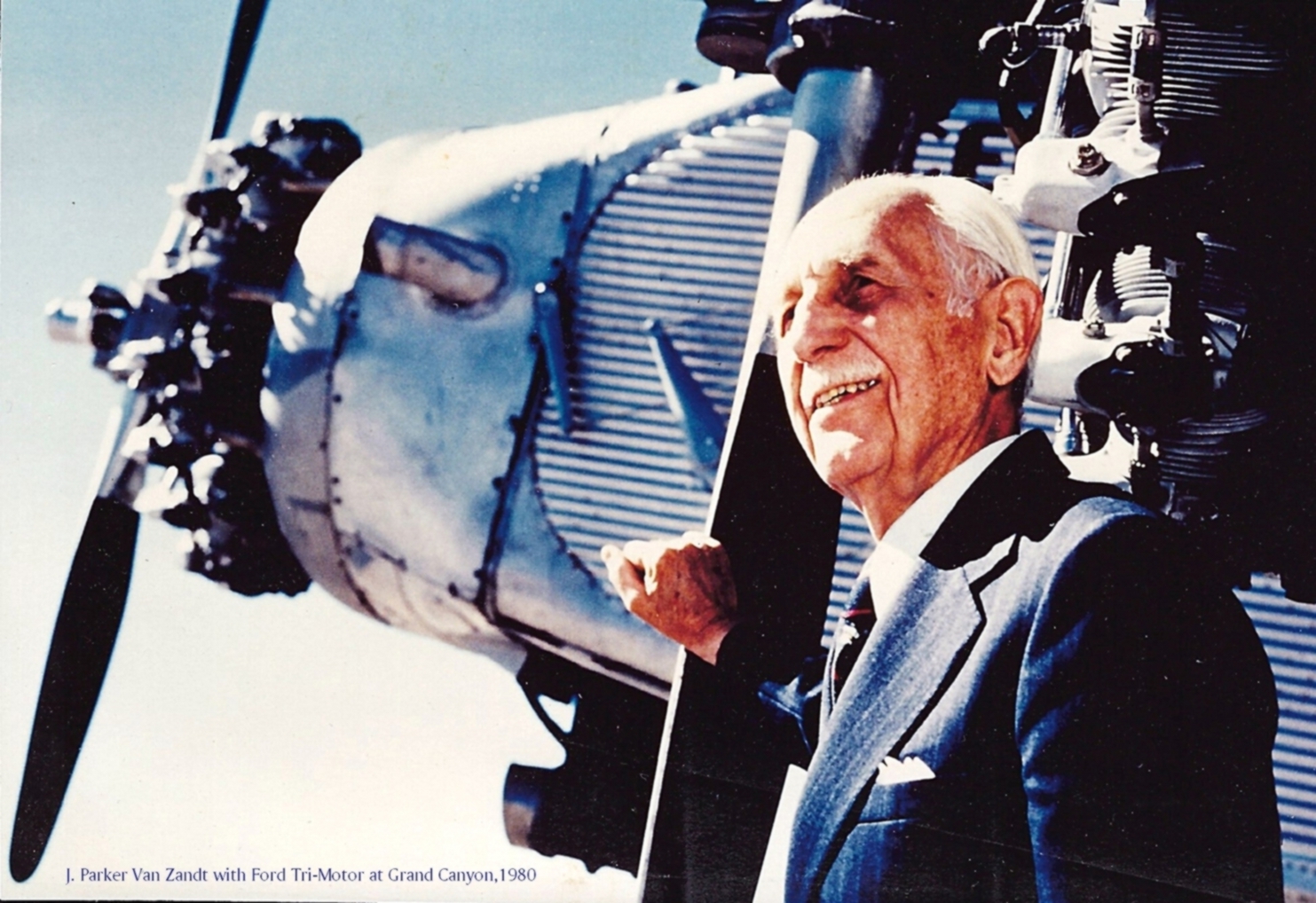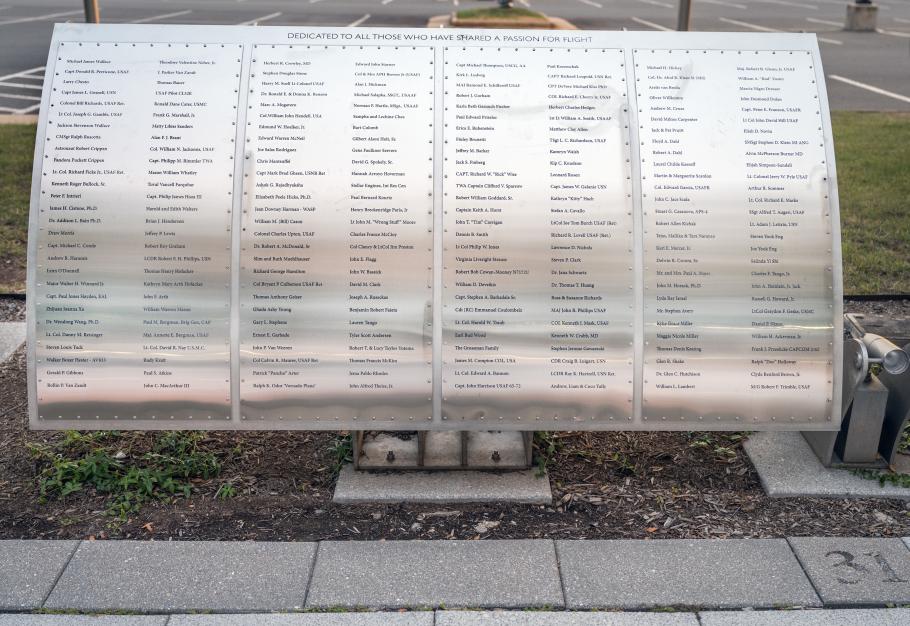J. Parker Van Zandt

Foil: 31 Panel: 1 Column: 2 Line: 2
Wall of Honor Level: Air and Space Sponsor
Honored by:
Jean and Lowell Braxton
J. Parker Van Zandt (1894-1990), aviation pioneer
Parker discovered flying during his service in WWI and never looked back.
His enthusiasm and love for flight marked his life course as a pilot, aviation promoter, and focused his keen vision to overcome barriers to safe flying.
After earning his PhD in physics, he joined the American Field Service, driving ammunition trucks to the frontlines for the French Army. He transferred to the U.S. Army, which appointed him a lieutenant in the Aviation Section of the Signal Corps. Using his physics training, he installed and tested the first radio equipment on aircraft and helped to develop radio navigation methods which guided bombers over enemy territory in the dark. In 1919 he developed the first crude turn-and-bank indicator for aircraft navigation, allowing flights regardless of the weather, later testing its reliability by weekly flying a U.S. Mail route alone. He helped develop the Earth Inductor Compass, which was awarded the Magellan Medal in 1921, and used by Charles Lindbergh on his historic 1927 Trans-Atlantic flight.
He became Civil Aviation Advisor to the new Army Air Service and urged the military and Congress to foster civil aviation as a second line of national defense, adopting a similar policy of support the government provided to highway and marine transportation. His survey of European use of aviation found many early airlines already operating, culminating in a Report on Civil Aviation to Congress, as well as a 1925 article published by National Geographic. Finally convinced, Congress enacted laws enabling air mail service and air commerce, providing public responsibility for navigation aids and uniform air regulations.
Parker created Scenic Airways in 1927 for sight-seeing flights over the Grand Canyon, and to support his fledgling business, founded a small airport called Sky Harbor, which became the busy modern airport serving Phoenix, Arizona today.
He assisted in the development of the new Civil Aeronautics Administration, organizing a system of licensing pilots, receiving license #17 himself. He joined Ford Motor Company as general manager and chief pilot of its demonstration airline, eventually becoming Fords sales representative for its Tri-Motor plane in Europe. With Pan American Airlines he managed airports in Hawaii and the Philippines.
When in 1933 the Chicago World Fair was being organized, Parker worked at assembling aviation and automotive exhibits. Named European Commissioner for the exposition, he persuaded European countries to display their national products and tourist attractions.
During WWII he worked on aviation issues with the Civil Aeronautics Board, later joining an effort to De-Germanize the airlines in South America, then dominated by Germans, posing a potential threat to the Panama Canal.
For the rest of his career, Parker continued to work in various aspects of
aviation: with the Air Force, the United Nations, the State Department in the Aviation Section of NATO, and his own consulting business. Living all over the world, he relished traveling, writing, learning new languages, visiting exotic places. Approachable, warm, urbane, Parker was a true Citizen of the Air and of the World.
Wall of Honor profiles are provided by the honoree or the donor who added their name to the Wall of Honor. The Museum cannot validate all facts contained in the profiles.
Foil: 31
All foil images coming soon.View other foils on our Wall of Honor Flickr Gallery
